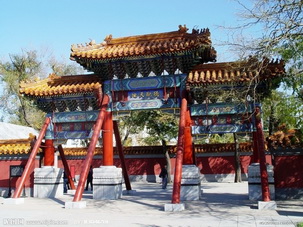
 China Tours
China Tours Tibet Tours
Tibet Tours China Theme Tours
China Theme Tours Off The Beaten Track
Off The Beaten Track Yangtze Cruises
Yangtze Cruises China Trip Planner
China Trip Planner Travel Agents
Travel Agents


We had a wonderful time in Tibet. We have learned a lot about this unique destination because of the wonderful guide Degyi who is so knowledge and always available towards our tours. We stayed at the Shangri-La Hotel Lhasa, and we would never imagine a Tibet travel could be so nice and amazing without the help of Degyi.
Also, thanks a lot to our Tibetan driver Mr.Wongdun for his safe driving and a good sense of service along the way.
We shall return Tibet in the near future!
P.B. and A. A - Europe
Tibet Travel
June 2018 (Private Tibet Journey from Kathmandu)

 For most visitors to China, sightseeing means a daily encounter with Chinese architecture of one type or another ranging from temples through gardens, mausoleum, pagodas, and imperial palaces to residential houses. Visitors who see Chinese buildings will invariably notice the extensive use of timber as a building material in addition to bricks and tiles. That is because timber was not only easily available and transportable but also was very practical. Heavy posts are capable of carrying the roof while the wood could be carved for decoration and embellishment. After all, who would fail to be impressed by the highly elaborate decorations and embellishments in those buildings?
For most visitors to China, sightseeing means a daily encounter with Chinese architecture of one type or another ranging from temples through gardens, mausoleum, pagodas, and imperial palaces to residential houses. Visitors who see Chinese buildings will invariably notice the extensive use of timber as a building material in addition to bricks and tiles. That is because timber was not only easily available and transportable but also was very practical. Heavy posts are capable of carrying the roof while the wood could be carved for decoration and embellishment. After all, who would fail to be impressed by the highly elaborate decorations and embellishments in those buildings?Pagodas are as much a part of Chinese scenery as churches are in England. Tall or low, massive or slender, pagodas dot China's landscape as evidence of Buddhist influence on and merge with Chinese culture. The oldest existing pagoda, also built of wood, is located in Yingxian County in north Shanxi. That the 67. l3 meter-high pagoda should have survived all the vicissitudes of life for more than 900 years, including some strong earthquakes, was a miracle. Because it is out of the way, most visitors do not see this pagoda. More frequently visited pagodas are the Great Wild Goose Pagoda in Xi'an, the Pagoda of Six Harmonies in Hangzhou, and the Forest of Pagodas near Shaolin Monastery in Henan, central China, to name just a few.
What is it that gives China's building unmistakable Chinese characteristics? It is the combination of the massive, often curved roof, the predominant use of timber, the terrace, the corbel construction, and the dazzlingly colorful decoration.
The roofs of Chinese temples and palaces lend an air of weightlessness to the generally large and massive buildings. The eaves, of ten slightly upturned; seem to let the entire roof float above the building as if carried on invisible columns. Another way of achieving this illusion of floating is the double roof. Here the roof is constructed in two stages and the low wall separating the two suggests a small additional storey. A practical function of upturned roof gutters is to ensure enough light inside the building while making it easy to carry off rain-water. Additionally, the roofs of palaces are covered with glazed tiles. As the emperor's color was yellow, those of the imperial palace are in yellow. The Temple of Heaven, on the other hand, is appropriately covered ln blue tiles, the color of the sky.
Buildings in China, be they temples or palaces or pagodas, rise invariably from a terrace. That is as it should be, for the wooden frame, however flexible it is, has to be protected from any ingress
of water. Old texts, however, point to a symbolic cosmological meaning when they state "the Heaven covers and the Earth carries". The terrace in these terms represents the Earth and the roof the Heaven. Thus we come to the recurrent theme of ancient Chinese philosophy, which is a complete harmony between man and nature.
No discussion of traditional Chinese buildings can be completed without a mention of the corbel construction. Developed by Chinese craftsmen over the centuries, it is the ultimate form or style of Chinese architecture that is the pride of the Chinese nation and the admiration of foreigners. While posts and beams satisfy structural requirements and are often built without the benefit of glue or nails, corbels and brackets are artfully combined into incredibly complex and visually intriguing structures to support the roof. These corbel systems also give a clue to the social status of the owner of a house because ordinary people were not permitted to have them: they were the prerogative of people of rank.
Decorations for ancient Chinese buildings are largely of two types, i. e., colorful paintings and decorative sculptures. The former plays a decorative, symbolic or protective role. A classic example is that found in the Long Corridor of the Summer Palace in Beijing. Decorative sculptures, which are found both inside and outside the main buildings, range from brick sculptures on walls, stone sculptures on balustrades, to the small sculptures of mythological beasts atop a palace or temple roof ridge and the large ones of men and beasts in front of a mausoleum. For example, in front of the Hall of Preserving Harmony there is 200-ton stone on the terrace which is an intricate1y carved design of dragon and phoenix.
Chinese Garden
Garden building is considered a chief component of Chinese culture. The Chinese garden has a long history. It first appeared in the form of a hunting preserve for kings and nobles in the 11th Century B.C. during the Zhou Dynasty. During the Qin and Han dynasties, those natural preserves were made more beautiful and became places of recreation for imperial families.
Garden building saw its heyday during the Ming and Qing dynasties and the imperial garden Yuanming Yuan was regarded as a masterpiece in this period. Different from the classical European gardens, in which geometric patterns dominate, Chinese gardens are made to resemble natural landscapes on a smaller scale. Traditional Chinese gardens fall into three categories, namely, imperial, private, and landscape gardens.
Most imperial gardens are located in north China: Beihai Park, the Summer Palace, the Imperial Garden of the Forbidden City in Beijing; the Imperial Summer Resort in Chengde, Hebei Province, and Huaqing Palace in Xi'an, Shaanxi Province. Imperial gardens occupy large areas. The Summer Palace, for instance, has an area of 290 hectares while the Imperial Summer Resort in Chengde, which covers more than 560 hectares, is the largest imperial garden in China. Most of these gardens have three sections which serve administrative, residential, and recreational purposes. In large imperial gardens, the main buildings are connected by an imaginary line in the middle of the garden on a north-south axis. Other buildings are scattered among hills, and waters are linked by subordinate lines, forming a well-designed symmetry and adding beauty to the chief architectural complex.
Other characteristics of the imperial gardens are colored paintings, screen walls, stone tablets, bridges, man-made hills and lakes, and ingeniously-designed buildings. Decorated archways
abound in those gardens.
Most private gardens are found in the south, especially in cities south of the Yangtze River. Private gardens were mostly built at one side or the back of the residential houses. In almost every garden, there is a large space in the garden set in a landscape of artistically arranged rockeries, ponds, pavilions, bridges, trees, and flowers. Surrounding the beautiful scene are small open areas partitioned by corridors or walls with latticed windows or beautifully shaped doors. Buildings in the garden were used for receiving guests, holding banquets, reading, or writing poetry. They are open on all sides and are often situated near the water. The winding corridors connect various buildings and also provide a covered veranda as shelter from the rain and shade from the sun.
Suzhou, known as the home of gardens, displays the most and the best traditional private gardens in China. Among them, the Pavilion of the Surging Waves is known for its rustic charm, Lion Grove for its strange rockeries, the Humble Administrator's Garden for its tranquil waters and elegant buildings, and the Garden for Lingering in for its ancient architectural art and the arrangement of hills, waters and plants. They are the examples of the garden styles of the Song, Yuan, Ming and Qing dynasties respectively.
Gardens in Yangzhou are characterized by their architectural style and artistic rockeries, whereas Guangdong style gardens are distinguished by large ponds, brightly colored buildings, and luxuriant plants.
Landscape gardens are different and are places for public recreation. The landscape garden mainly contains natural scenes, so it looks more natural than artificial. Good examples include the ten West Lake scenes in Hangzhou, the twenty-four Slim West Lake scenes in Yangzhou, and the eight Daming lake scenes in Jinan.
Many famous poets and painters contributed greatly to the development of landscape gardens. They either left poetic inscriptions for those gardens, or designed many of the gardens themselves. In order to commemorate those poets and painters, later generations had their poems and inscriptions engraved on tablets, pavilions, or pagodas, thus enchanting and inspiring visitors.
China Trip Planner | Travel Agents | About Us | Why Us | Contact Us | How to Pay | How to Book - Terms & Conditions | Site Map
Copyright © 2010 - 2030 All Rights Reserved.


 0086-28-85711328
0086-28-85711328 0086-28-85546015
0086-28-85546015




